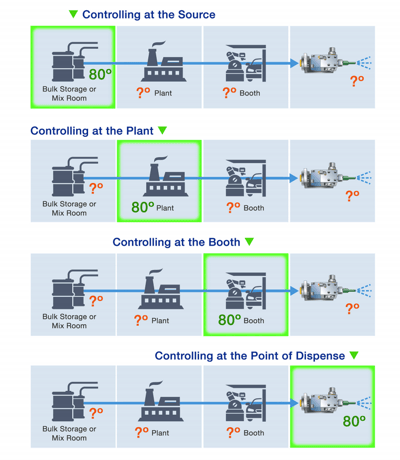“Being able to control the temperature within a narrow range as paint is being used can be very beneficial. The most obvious benefit is a reduced amount of solvent usage. This is not only more economical for the coater but also reduces the environmental impact and health risks to their employees. Reducing the amount of solvent added [provides] additional benefit to the performance of the paint being used. The two major benefits are: Reduced possibility of having solvent popping or blistering problems. The addition of too much solvent to certain paints or certain colors of paints may cause color shifts or gloss changes and by reducing the amount that needs to be added this can be avoided.”
- Herald Cales
Akzo-Nobel



.png?width=305&name=image%20(7).png)
.png?width=196&name=image%20(8).png)
.jpg?width=196&name=image-(8).jpg)
-1.jpg?width=196&name=image-(8)-1.jpg)